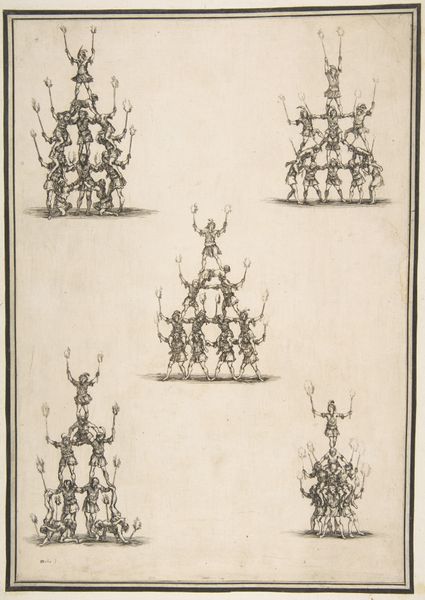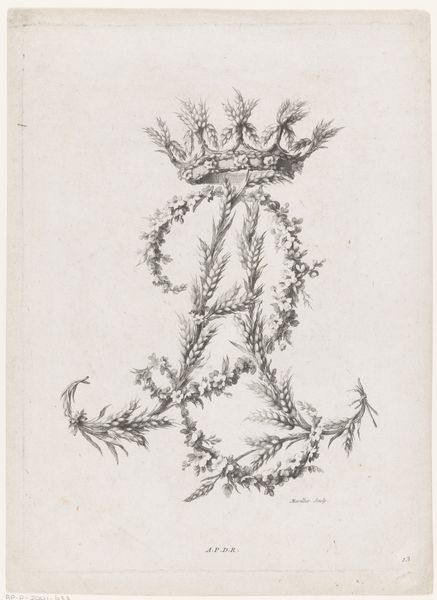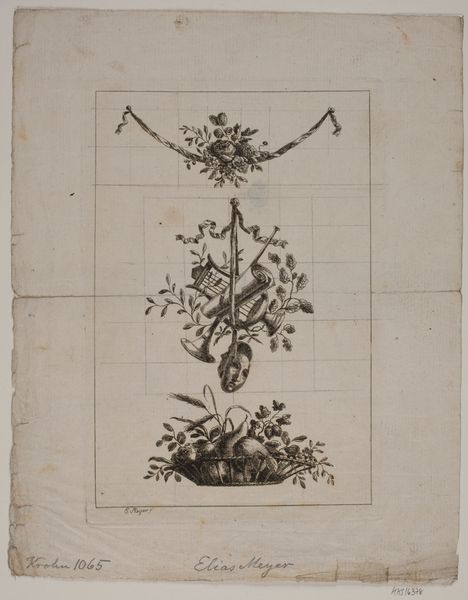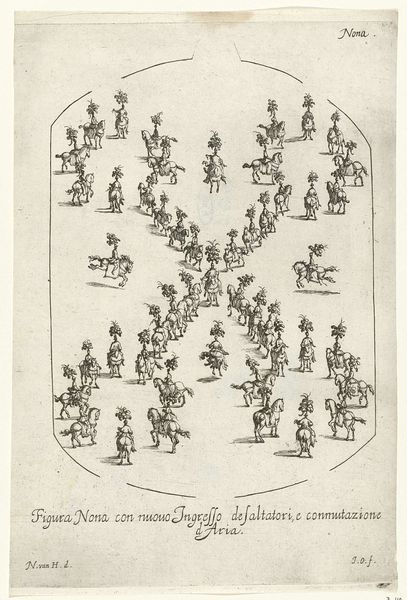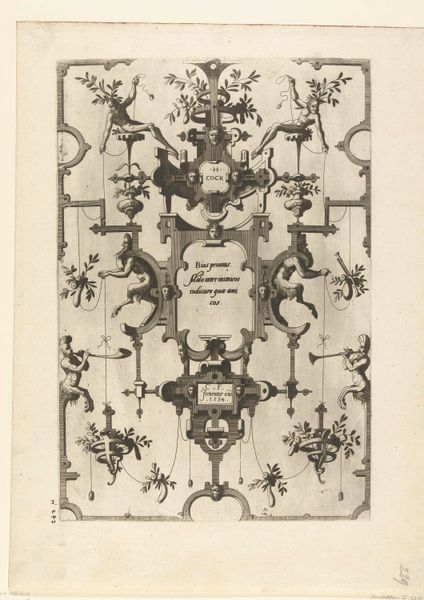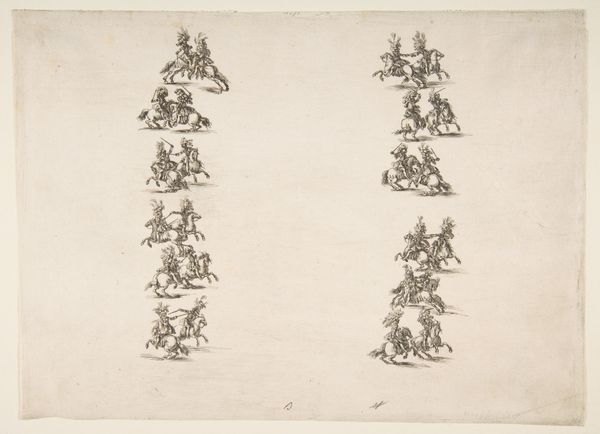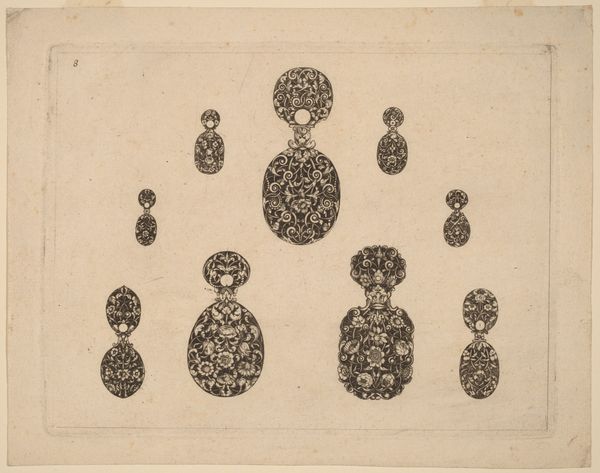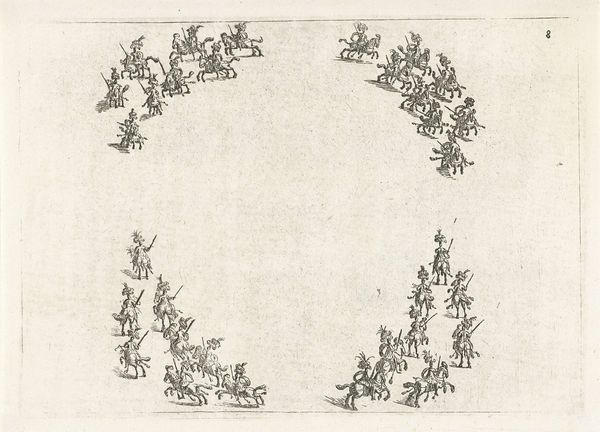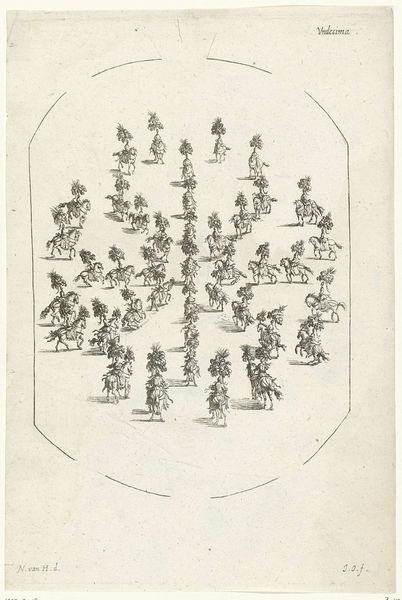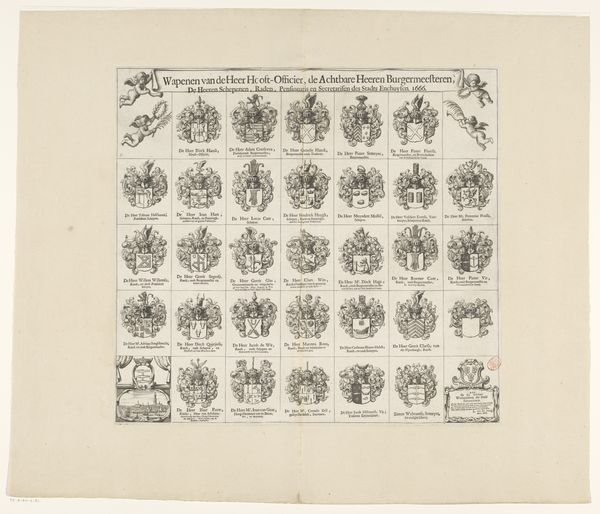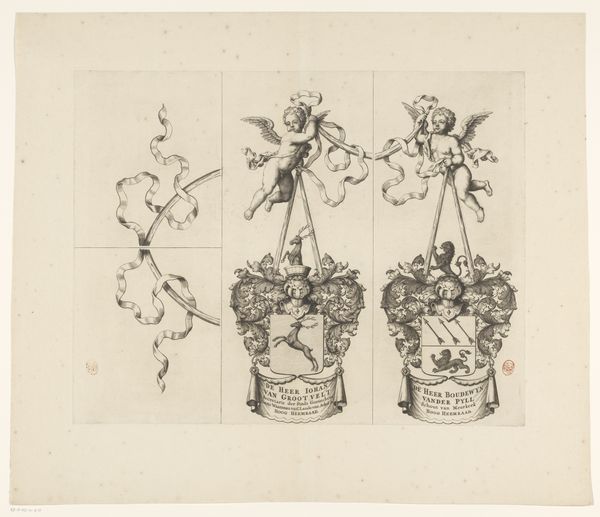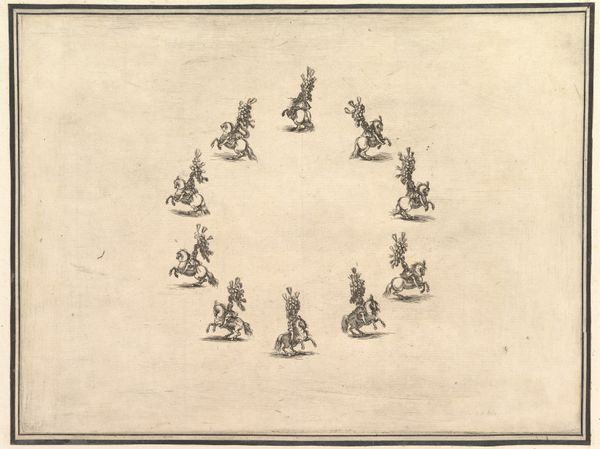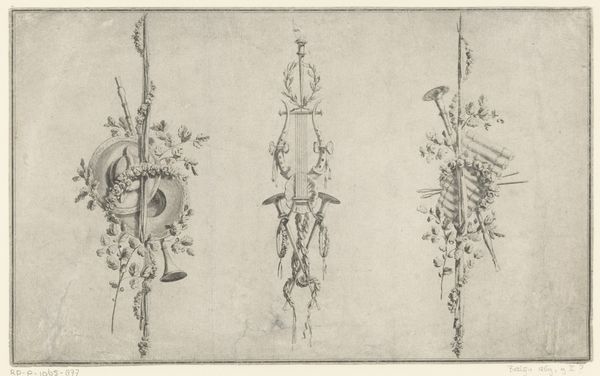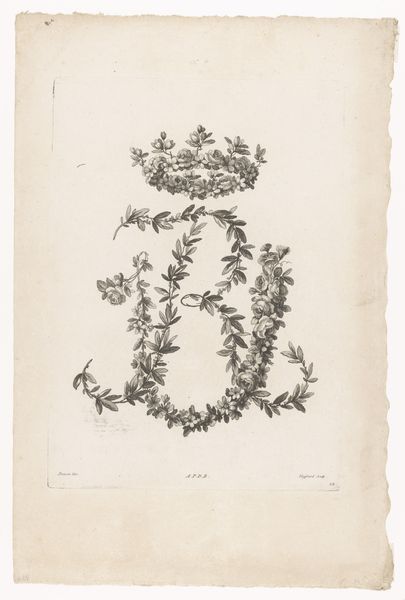
drawing, print, etching
#
drawing
#
baroque
# print
#
etching
#
figuration
#
history-painting
Dimensions: Sheet (trimmed): 12 13/16 × 8 7/8 in. (32.5 × 22.5 cm)
Copyright: Public Domain
Editor: This etching by Stefano della Bella, "Thirty-six Acrobats in Six Groups" from 1652, is at the Met. There’s something so playful, yet ordered, about these figures stacked into pyramids. It makes me think about games and perhaps also about society. What symbols or stories do you see within these acrobatic formations? Curator: The recurring motif of the acrobatic pyramids serves as a powerful emblem of hierarchy, not only in the literal stacking of bodies, but in a symbolic sense as well. Consider the torch each figure holds; the torch is an enduring symbol for enlightenment. Might della Bella be making a commentary on who truly illuminates society, and at what cost? Editor: I hadn't thought about the torches! That’s a clever connection. But does the repetition of these near-identical groups change the symbolism? Is it suggesting uniformity or some other collective idea? Curator: Indeed. The repetition amplifies the message. The pyramids are near-identical, which perhaps speaks to the limited avenues for social mobility during that period, and of power structures taking familiar, predictable forms. Does the fragility of the human structure change the message about power for you? Editor: Yes, definitely! There’s a tension there between the aspiration, maybe, and the very real potential for collapse. I'll definitely remember that fragility when I see similar arrangements elsewhere. Thanks! Curator: My pleasure! I am struck by how Stefano della Bella uses these circus acts to mirror deeper questions about hierarchy. I wonder what new layers we might discover next time?
Comments
No comments
Be the first to comment and join the conversation on the ultimate creative platform.
